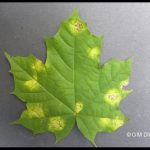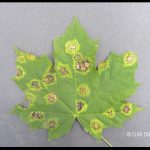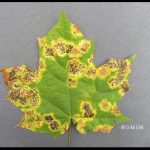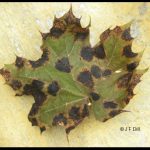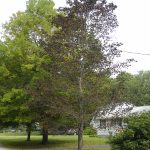Tar Spot Fungus
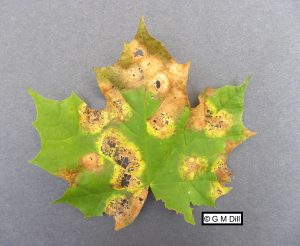
As you may have noticed, many of the maple trees in the area developed unsightly black leaf spots over the course of the 2011 summer and foliage was turning brown and dropping rapidly. The combination of the fungal pathogens ‘tar spot’ and ‘anthracnose’ caused this aesthetic damage to maples throughout Maine.
Tar spots, as the name suggests, are raised, black spots that form on the upper surfaces of maple leaves, not as the result of contact with actual tar, but due to a fungal infection. Fungi from the genus Rhytisma, most commonly Rhytisma Acerinum, typically shows up on maples in late spring or early summer as light green or pale yellow spots. As the season progresses, the yellow color intensifies and raised, black tar-like spots are formed within the yellow spots.
Tar spot alone is rarely serious enough to be detrimental to the overall health of infected trees. However, as the infection progresses trees become unsightly and can experience premature defoliation. If infected maple leaves begin to crinkle and turn brown, anthracnose, another common disease of maple, may also be present.
The fungi that cause tar spots and anthracnose overwinter on infected leaves that fall to the ground. The following spring, the fungi produce spores which are carried by the wind and can re-infect susceptible foliage at bud break, if weather conditions are right. The most effective management strategy is to rake and destroy infected leaves in the fall, thus reducing the amount of overwintering fungi. The application of fungicides to control tar spot is typically not recommended because complete coverage of all infected leaf surfaces is necessary and can be extremely difficult as well as costly.
James F. Dill & Griffin M. Dill

